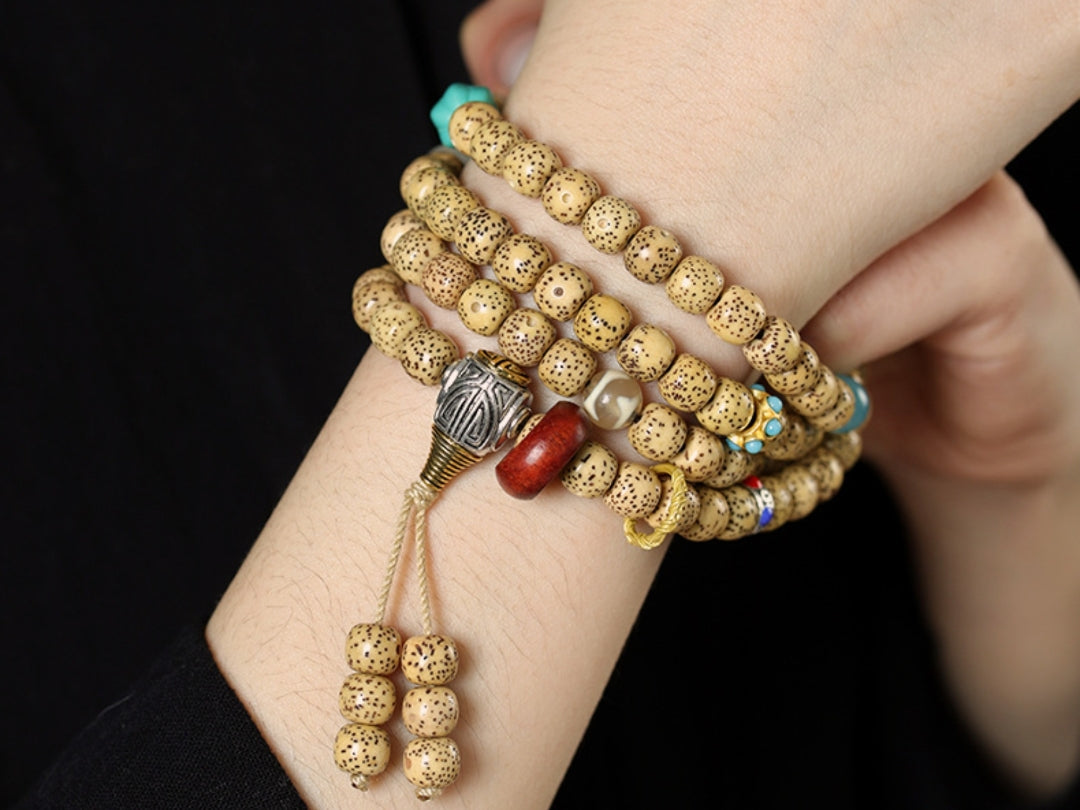In a world increasingly aware of environmental impact, Tibetan jewelry offers more than spiritual resonance—it embodies a commitment to sustainable jewelry practices that honor both Earth and artisan traditions. From recycled metals to zero‑waste workshops, the revival of ethical Tibetan craft shows how ancient wisdom and modern eco‑consciousness can blend seamlessly.
1. Reclaimed and Recycled Metals
Traditional Tibetan silversmiths prized the purity and workability of silver. Today’s eco‑spiritual jewelers extend that respect by:
-
Recycling Silver and Brass: Old ritual objects, discarded jewelry, and industrial scrap are melted down and repurposed, reducing mining waste.
-
Minimal Refining: Gentle purification techniques preserve metal integrity without harsh chemicals, lowering energy use.
-
Transparent Sourcing: Artisans trace every gram of metal back to certified recycling facilities, ensuring no new environmental damage.
By choosing reclaimed metals, makers and wearers of spiritual jewelry reduce the carbon footprint of each Buddha pendant and prayer bead.
2. Wild‑Harvested and Regenerative Materials
Beyond metal, many Tibetan designs incorporate natural elements:
-
Yak Bone Beads: Traditionally gathered from naturally shed yak bone, these beads carry the energy of the high plateau. Responsible artisans only collect from free‑range herds, avoiding harm to animals.
-
Sandalwood and Rhododendron Seed: Wild‑harvested from managed forests, these seeds and woods become carved Thangka pendants or mala beads. Regenerative harvesting ensures trees and plants can replenish naturally.
-
Natural Dyes and Finishes: Instead of toxic lacquers, artisans use plant‑based dyes and beeswax polish, protecting waterways and skin.
These practices honor the interconnectedness of all life—an essential tenet of spiritual jewelry.
3. Zero‑Waste Workshops
Tibetan artisans are embracing studio models that strive for zero waste:
-
Off‑cut Recycling: Silver filings, bone shavings, and wood scraps are collected and returned to the supply cycle.
-
Digital Patterning: Laser‑guided design minimizes material waste when cutting metal sheets or wood veneers.
-
Eco‑Packaging: Finished pieces ship in compostable pouches, recycled paper boxes, and plant‑based inks—no single‑use plastics in sight.
By closing the loop, these workshops reflect the Buddhist principle of non‑wastefulness, turning every scrap into opportunity.
4. Fair Trade and Community Empowerment
Sustainability extends to the people who make the jewelry:
-
Fair Wages & Safe Conditions: Artisans receive living wages and work in well‑ventilated studios, free from harmful fumes.
-
Skill‑Sharing Programs: Elder silversmiths mentor younger makers, preserving centuries‑old techniques and cultural heritage.
-
Community‑Led Initiatives: Profits support local schools, healthcare, and environmental restoration projects in Himalayan villages.
This holistic approach ensures Tibetan jewelry uplifts both planet and people.

5. Wearing Eco‑Spiritual Jewelry Mindfully
When you choose a piece crafted with these principles, you carry more than a beautiful ornament—you carry a promise:
-
Intentional Care: Clean with gentle cloths; recharge energy in moonlight or on a bed of dried herbs.
-
Daily Reminders: Each time you touch your mala bracelet or Buddha pendant, reflect on the Earth‑honoring practices behind it.
-
Conscious Gift‑Giving: Sharing eco‑spiritual jewelry spreads awareness of sustainable craftsmanship and mindful consumption.
Conclusion
The revival of Tibetan jewelry through eco‑spirituality proves that ancient craft and environmental ethics can thrive together. By embracing recycled metals, wild‑harvested materials, zero‑waste production, and fair‑trade values, artisans create pieces that nourish both spirit and planet. When you wear such jewelry, you join a global movement that honors the Earth’s resources and the hands that transform them into symbols of compassion and mindfulness.



